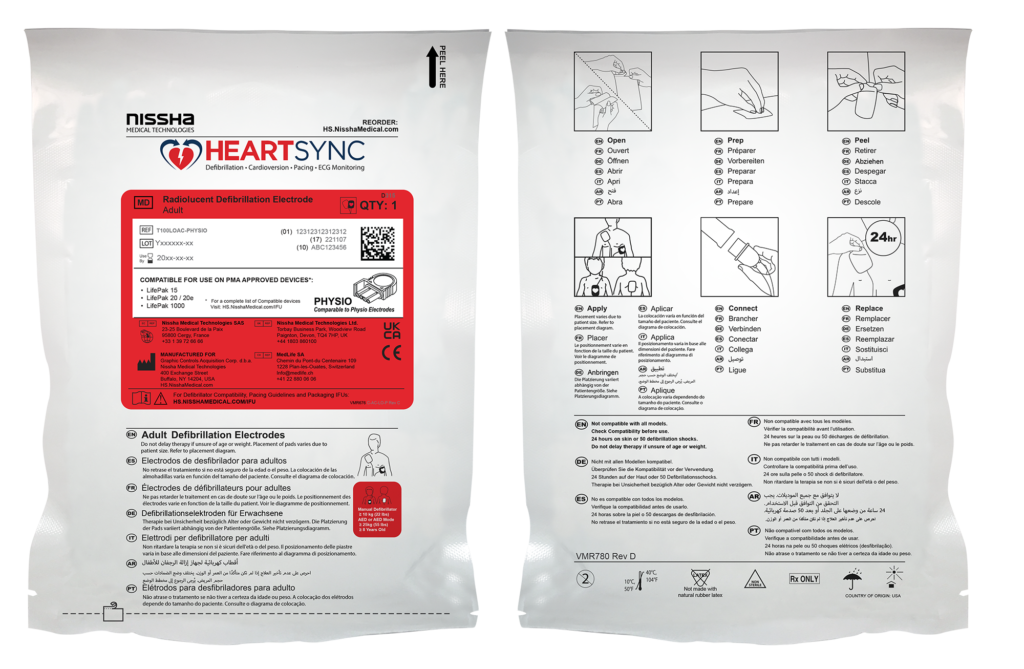What is the PMA meaning in medical manufacturing, and why does it matter? PMA stands for Premarket Approval, the FDA’s most rigorous pathway for approving high-risk medical devices. In July 2023, Nissha Medical Technologies (NMT) received PMA approval for its HeartSync line of disposable defibrillation electrodes. This marked a milestone that reflects years of collaboration, testing, and innovation.
PMA Meaning vs. 510(k): What’s the Difference?
To understand the definition of PMA, it helps to compare it to the more familiar 510(k) clearance process.
The 510(k) pathway applies to moderate-risk devices. It allows manufacturers to demonstrate that their product is substantially equivalent to one already on the market.
PMA approval is required for Class III, or high-risk, devices. Therefore, these products require extensive testing, clinical data, and a full FDA review before they can be sold.
In 2022, the FDA began enforcing PMA approval requirements for automated external defibrillators (AEDs) and their accessories, including defibrillation pads. As a result, companies had to meet higher standards to continue selling these products in the U.S. This regulatory shift raised the bar for manufacturers. HeartSync was ready.
How HeartSync Prepared for PMA Approval
Even before this regulatory shift, NMT had been preparing. In 2019, the company acquired HeartSync, a brand already known for its safe, reliable, and cost-effective defibrillation electrodes. At the time, HeartSync products were cleared under 510(k) and widely used across the U.S., Canada, and Europe.
However, NMT saw greater potential. By integrating HeartSync into its broader portfolio of wearable, disposable medical technologies, the company laid the foundation for pursuing PMA medical device approval.
From 510(k) to PMA: Meeting FDA’s Higher Standards
After acquiring HeartSync, NMT’s engineering and product development teams began validating the electrodes to meet PMA requirements. This involved a comprehensive series of tests, evaluations, and quality assessments.
Consequently, when the FDA up-classified AED accessories in 2022, NMT was already ahead of the curve. Through rigorous preparation and data submission, the company successfully achieved FDA PMA approval for its adult defibrillation electrodes in July 2023.
PMA Meaning and Packaging: What Changed After Approval
With the PMA milestone came packaging updates:
First, the label was revised to indicate adult-only use, replacing the previous adult/child designation.
In addition, the packaging now includes the UKCA marking, supporting broader international distribution.
It also features a streamlined barcode system for easier inventory management.
Most notably, it now clearly states PMA-approved compatibility with AEDs.
Customers can view the full list of compatible AEDs on the product’s Instructions for Use (IFU) page.
Real-World Example of PMA Meaning
This packaging update provides a visible, real-world representation of what PMA meaning looks like when applied to a commercial medical product. It also reinforces the reliability and quality assurance behind each HeartSync electrode.

Global Impact of PMA-Approved HeartSync Electrodes
Since receiving PMA approval, more than 20 million HeartSync electrodes have been distributed globally. As a result, the HeartSync brand has become even more trusted, and continues to grow under NMT’s leadership.
Why PMA Meaning Matters in Cardiac Care
Understanding the PMA meaning is more than a regulatory exercise. It reflects a commitment to the highest standards of product safety and performance, especially for devices that play a direct role in saving lives.
For manufacturers, earning PMA approval is difficult. For healthcare providers and patients, however, it’s reassurance that the product has undergone the FDA’s most comprehensive review.
This isn’t the end of the journey. HeartSync remains a core part of NMT’s mission to develop safe, effective, and innovative solutions for healthcare systems worldwide.
